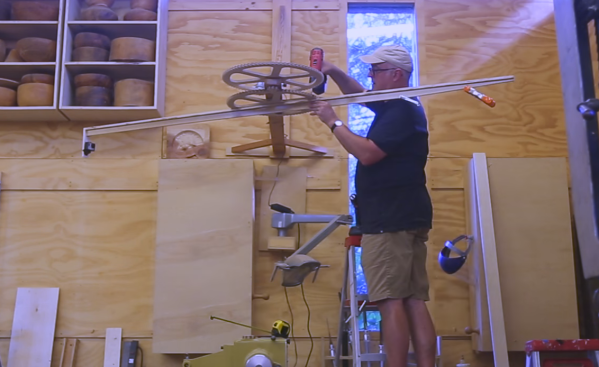The combination of time-lapse photography and slow camera panning can be quite hypnotic – think of those cool sunset to nightfall shots where the camera slowly pans across a cityscape with car lights zooming by. [Frank Howarth] wanted to replicate such shots in his shop, and came up with this orbiting overhead time-lapse rig for his GoPro.
[Frank] clearly cares about the photography in his videos. Everything is well lit, he uses wide-open apertures for shallow depth of field shots, and the editing and post-production effects are top notch. So a good quality build was in order for this rig, which as the video below shows, will be used for overhead shots during long sessions at the lathe and other machines. The gears for this build were designed with [Matthias Wandel]’s gear template app and cut from birch plywood with a CNC router. Two large gears and two small pinions gear down the motor enough for a slow, smooth orbit. The GoPro is mounted on a long boom and pointed in and down; the resulting shots are smooth and professional looking, with the money shot being that last look at [Frank]’s dream shop.
If you haven’t seen [Frank]’s YouTube channel, you might want to check it out. While his material of choice is dead tree carcasses, his approach to projects and the machines and techniques he employs are great stuff. We featured his bamboo Death Star recently, and if you check out his CNC router build, you’ll see [Frank] is far from a one-trick pony.
Continue reading “Time Lapse Rig Puts GoPro Into Orbit – In Your Shop”













